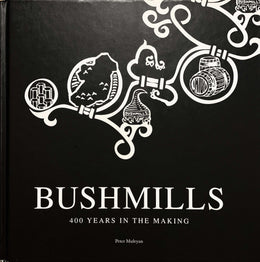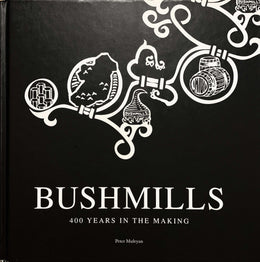
In August 1891, the Bushmills Old Distillery company reformed with a share capital of £110,000. It is around this point in time that we first come across a surname that will be forever associated with the distillery: Boyd.
James Steen Boyd steps out of nowhere in the mid- 1880s. By 1887, according to a letter held in the Public Records Office of Northern Ireland: "Mr Boyd and Mr Connor are practically the owners of Bushmills Distillery." Charles C. Connor was Mayor of Belfast between 1889 and 1891 and thereafter he and Boyd are recorded as Directors of the distillery. The prospectus in 1891 is bullish and boasts that business "is in a most flourishing condition and the Directors confidently anticipate a continuance of prosperity. The sales within the last four years have almost trebled."
Sales of whiskey may indeed have trebled over this period. During the 1880s a tiny insect phylloxera vastatrix (the American grape louse) crossed the Atlantic, and proceeded to wipe out the vineyards of the Cognac region. By the end of the 1880s French brandy was almost impossible to come across, and sales of Irish whiskey reached their peak. Despite the arrival of 'silent spirit', the decades leading up to the end of the 19th century were golden years for Irish whiskey. It is curious to find that by 1895 Bushmills distillery had again gone into liquidation.
The reasons why the company folded are unclear, but the following year it had once again re-formed. Curiously James Steen Boyd's name is absent from the Board of Directors. This, as we shall see, may well be the clue that unlocks that particular puzzle.
The new company adopted a change of name, from the rather awkward 'The Bushmills Old Distillery Company', to the rather more familiar 'The Old Bushmills Distillery Company'. The 1896 prospectus also boasts:

"[Old Bushmills] is of world-wide celebrity, and has been known for over one hundred years. It has been supplied to the House of Lords, and amongst the numerous customers on the books of the company are the Army and Navy Stores London, the Civil Service Supply Association, Gordon Hotels, Hotel Cecil, Harrods Stores and various clubs etc."
It also states that it has a "valuable stock of whiskey, the greater portion of which is fully mature, dating back to the year 1885". At this point in history whiskies rarely carried an age statement, preferring the more verbose (and vague) `Grand Liqueur', 'Pure Old' or 'Special'. We can see here that whiskey stocks at Bushmills cannot have been kept for much longer than a decade. In the Victorian period, that was a very long time, and rather exceptional.
At that time, and possibly to coincide with the rebuilding of the distillery after the 1885 fire, Old Bushmills started making the kind of whiskey with which it would become world famous —Single Malt whiskey, made solely from malted barley.
We know for certain that the distillery was making malt whiskey in 1887, just two years after the fire. Ten years later it announced a special bottling of "10,000 dozens of our Pure Old Malt Whiskey, distilled in the Jubilee year of 1887". The whiskey was released for the Diamond Jubilee in 1897 "in order to provide a real luxury for the celebration of the record reign of Her Most Gracious Majesty Queen Victoria". In 1900 Queen Victoria visited Ireland for the last time, so it is just possible that she sampled Old Bushmills while in Dublin. As legend has it, she was fond of a wee dram in her morning cup of tea.
However this Jubilee Malt was not the first single malt to come from the distillery that would make this style of Irish whiskey its own. In 1891 it launched 'Old Glyn Bush', which would have contained the first whiskeys to come from the new plant. This would date the malt at somewhere between a four and a six-year-old, which would be about right. While this is much younger than any expression of Old Bushmills available today, in the early 1990s, a century after Old Glyn Bush, the distillery was selling a five-year-old malt on the Italian market.
It is unlikely that we will ever know exactly when and why Old Bushmills decided to swim against the tide, to produce the kind of whiskey that while popular in Scotland, was alien to Ireland. Most of the company records were destroyed when their Belfast offices were razed to the ground during the 1941 Belfast Blitz.
Written by Peter Mulryan
The text is an excerpt from "Bushmills: 400 Years in the Making" (pp. 46 - 48), written by Peter Mulryan, published 2008 by Appletree Press Ltd.







